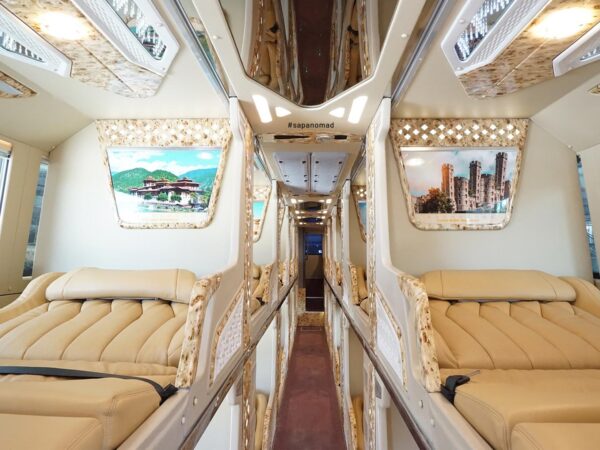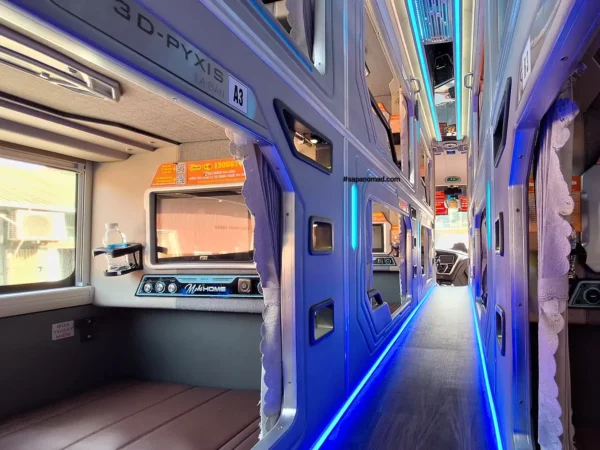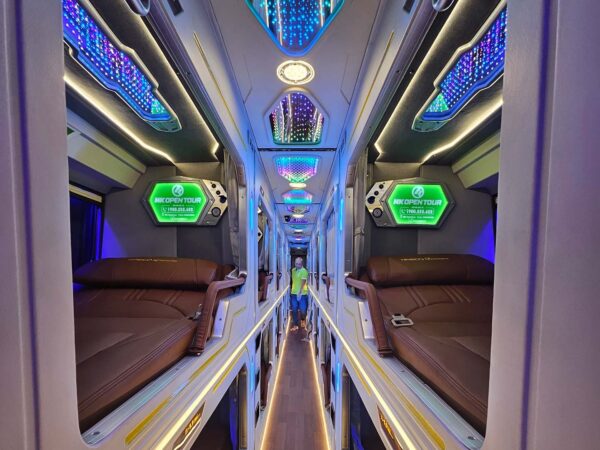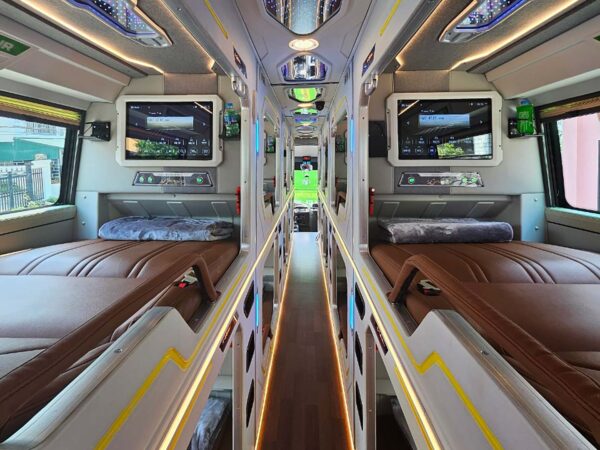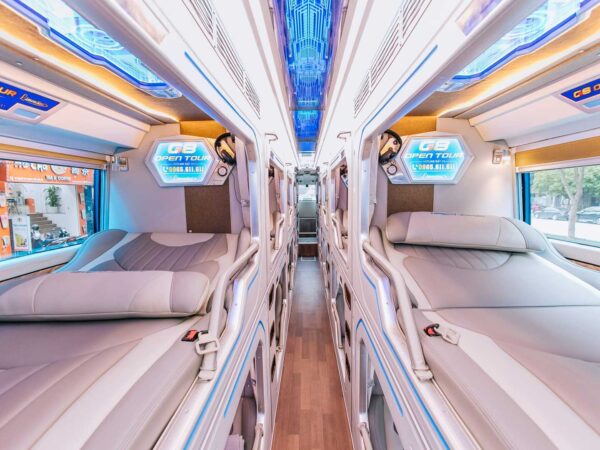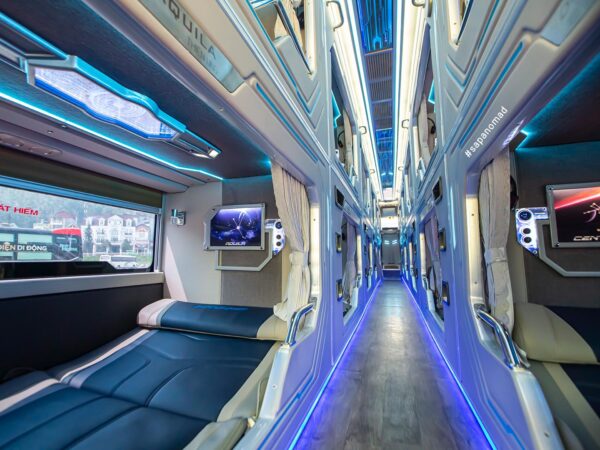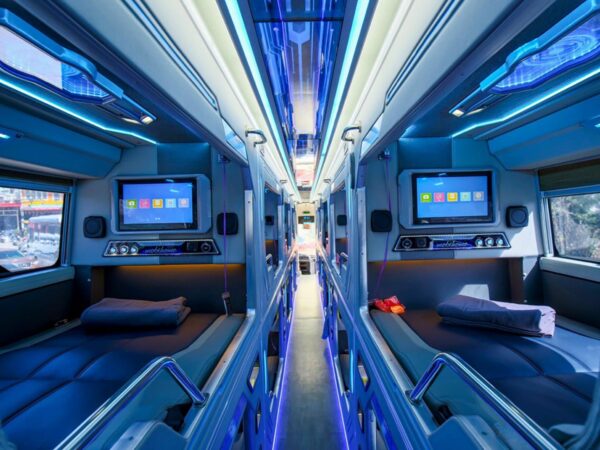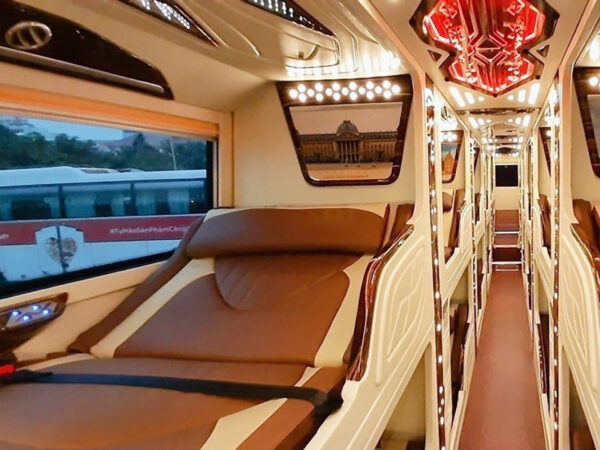Hanoi to Sapa Bus or Train: The Smartest Travel Choice
Traveling from Hanoi to Sapa bus or train? You have two great options: taking a bus or a train. Each choice has its own benefits, so it’s worth considering what matters most to you. Buses are generally faster and more direct, while trains offer a more relaxed and scenic journey. In this guide, we’ll help you weigh the pros and cons to find the best way for your adventure.
Check out the overview table to see the differences between train and bus travel:
| Factors | Bus | Train |
| Price | More expensive | Cheaper |
| Total Time Taken | 9 hours | 7 hours |
| Ease of use | Need to find exchange counter at Hanoi Train station | Easy to get tickets |
| Cleanliness | Very tidy; no stains on the sheets | Dusty, with wrappers in the cracks of the bed and hair in blank |
| Convenience and Accessibility |
|
|
| Travel Experience |
|
|
Hanoi to Sapa Bus Or Train – Which Wins?
Wondering whether to take the Hanoi to Sapa bus or train? Let’s compare both options to help you decide which travel method offers the best experience for your journey.
Price

Winner: Bus
When comparing the prices between Hanoi to Sapa bus or train, the bus and train options differ significantly. For the train journey, one would spend a total of VND 1,219,515, which includes an additional VND 20,000 for a drink and the cab ride from Lào Cai to Sapa.
In contrast, the bus from Hanoi to Sapa is a more budget-friendly choice, costing approximately VND 472,807 per person. This is about half the price of the train ticket. The bus offers a much more economical option for those looking to save money. However, if comfort and additional services are a priority, the train might be worth the extra expense.
Below are some famous brands from Hanoi to Sapa. Click here to get your ticket quickly and easily, and discover the stunning natural beauty and unique culture of this wonderful region!
Total Time Taken
Winner: Bus
When comparing travel times from Hanoi to Sapa, the train and bus each have their own timelines. The train journey takes about 9 hours in total – 8 hours on the train itself, plus an extra hour for a cab ride into Sapa once the train arrives. On the other hand, the bus trip is quicker, taking around 7 hours from start to finish without any additional transfers.
Ease of use (Get Physical Tickets and Find the Train)

Winner: Bus
Regarding the ease of use between taking Hanoi to Sapa bus or train, the bus option generally proves simpler. For the train from Hanoi to Sapa, one must navigate the process of exchanging online vouchers for physical tickets at the train station, which can be a bit confusing. Although the staff is available to help, finding the ticket exchange location can be tricky, especially if one doesn’t speak Vietnamese and the confirmation voucher lacks specific instructions.
On the other hand, the bus experience is more straightforward. The bus pickup point is easy to find thanks to its large red sign, and the ticket exchange is quick with just one counter. The bus arrives at the shopfront early, allowing ample time for ticket pickup and luggage handling.
Cleanliness
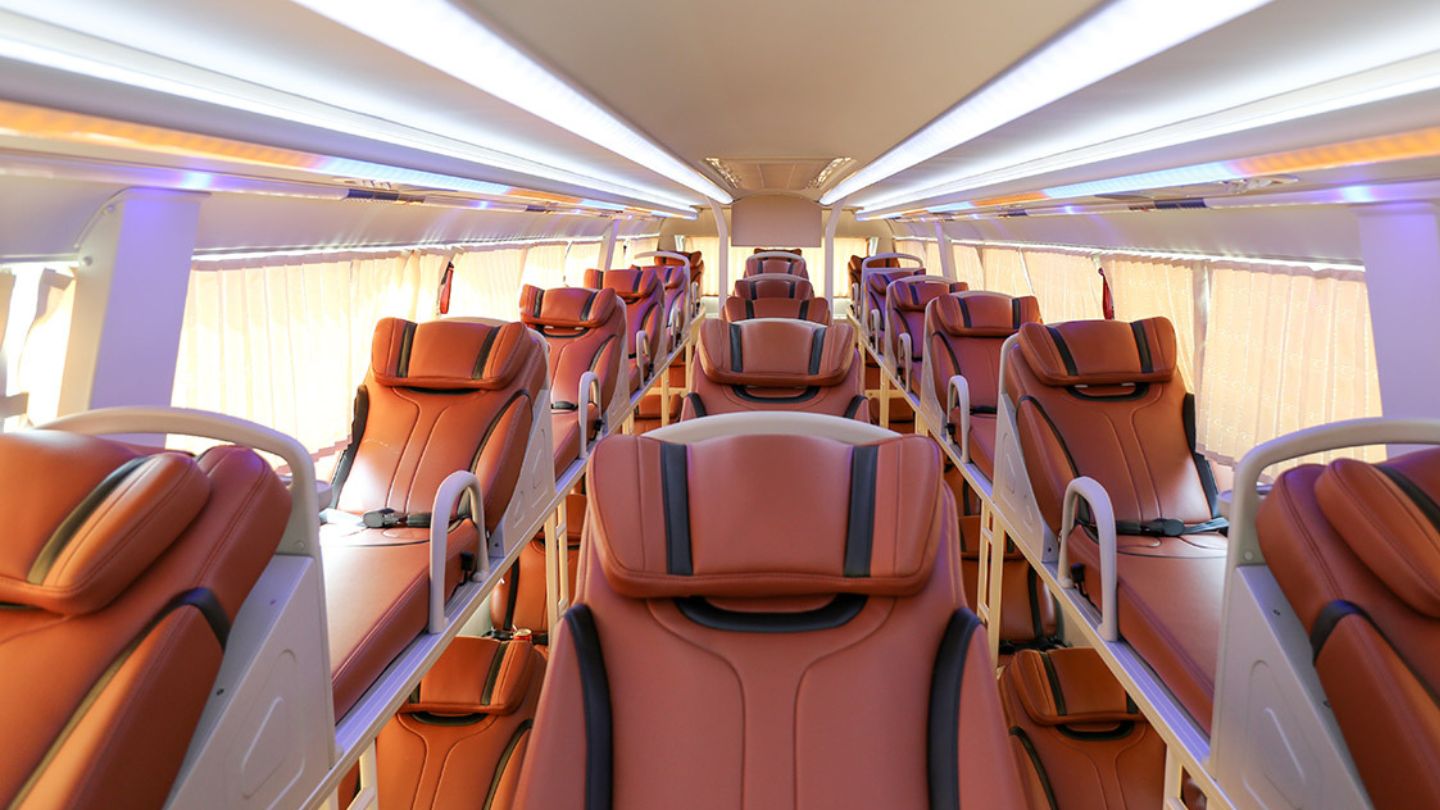
Winner: Depend
On the train, each bed is equipped with a firm pillow and a clean duvet, which provides warmth through the night. However, the train ride can be quite noisy, making it difficult to sleep soundly, and the thin walls allow for loud conversations from fellow passengers. Additionally, the shared toilet between six cabins can be less than ideal, especially if cleanliness is a concern.
In contrast, the bus experience comes with its own set of challenges. The beds on the bus often have issues, such as finding hair and plastic wrappers in the bedding, and the short length of the beds can be uncomfortable for taller passengers. The low ceiling makes it hard to sit up comfortably, and the pillow is unusually hard, feeling more like a block than a cushion.
Convenience and Accessibility
Winner: Bus
Both Hanoi to Sapa bus or train offer distinct advantages. The train station in Hanoi is centrally located, making it relatively easy to reach. However, once there, finding your specific train and navigating the large station can be a bit challenging, especially if it’s your first time or if the station is crowded. It might take a little extra time to figure out where you need to go, and the process can be a bit overwhelming.

In contrast, the bus offers a more straightforward and user-friendly experience. The pickup points for buses are typically well-marked and located in convenient areas around Hanoi, often close to popular landmarks or easily accessible by public transportation. The bus terminals are usually smaller and simpler to navigate, with clear signage and less hustle and bustle compared to train stations.

Travel Experience
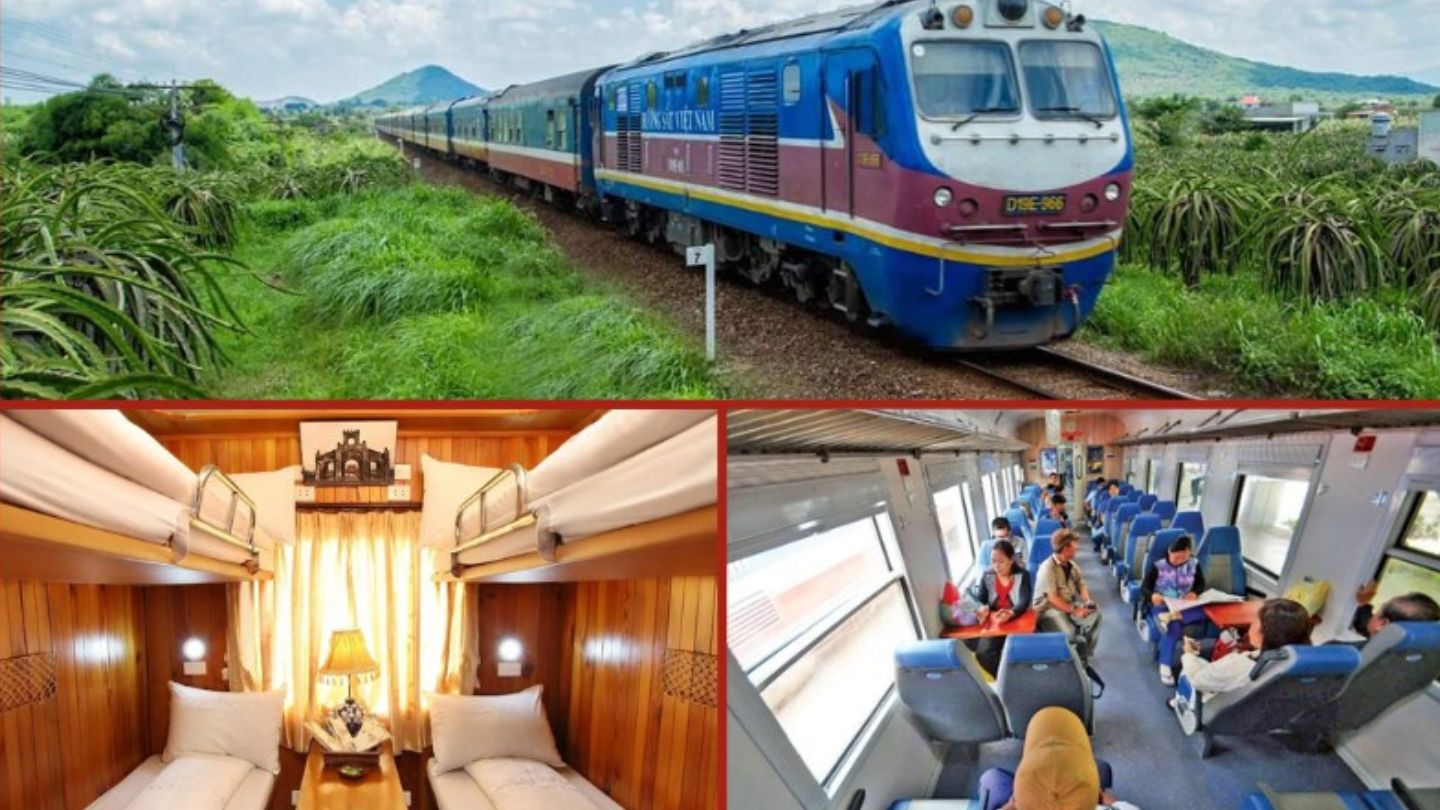
Winner: Train
When comparing travel experiences, trains often come out on top when placed alongside buses. Traveling by train provides more space to move around, with wider seats and the ability to walk between carriages. Passengers can enjoy scenic views through large windows while relaxing in a comfortable environment, often with amenities like dining cars.
In contrast, bus travel can feel cramped, with limited legroom and fewer opportunities to stretch your legs. Buses may also experience delays due to traffic, while trains usually run on dedicated tracks, making travel times more reliable. Furthermore, trains often have cleaner restrooms and a quieter atmosphere, enhancing the overall experience.
Conclusion
So, which do you prefer: Hanoi to Sapa bus or train? Choosing between the bus and train for your Hanoi to Sapa journey depends on what you value most. The bus offers a quicker, direct route, while the train provides a more comfortable and scenic experience. Both options have their perks, so think about your preferences for travel time and comfort. Either way, you’re in for a memorable trip to beautiful Sapa.
FAQs
What are the departure times for buses and trains from Hanoi to Sapa?
Buses depart frequently throughout the day, with options between 6 AM and 9 PM. Trains usually depart at 9 PM, with a night train Hanoi to Sapa. It’s best to check for updated schedules.
Are there sleeper buses or sleeper trains from Hanoi to Sapa?
Yes, both buses and trains offer sleeper options. Sleeper buses have reclining seats, while trains offer sleeper cabins. Both provide a comfortable and restful option for long-distance travel.
Which is safer, the bus or the train to Sapa?
Both modes of transport are safe, but trains tend to have a better safety record with less risk of traffic accidents. Buses can sometimes face delays due to road conditions, but are still considered safe.


